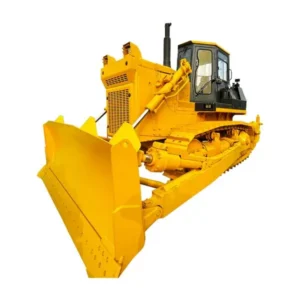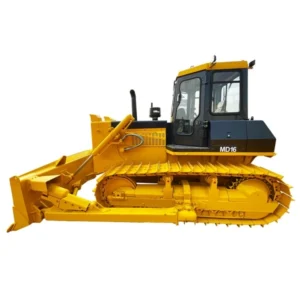Introduction
In the realm of construction and heavy machinery, the dozer blade holds a crucial role. This often overlooked piece of equipment is essential for various applications in the construction and earthmoving industries. Whether you’re a seasoned professional or just getting started, understanding the ins and outs of a dozer blade can significantly impact your efficiency and project outcomes. In this article, we’ll delve into the world of dozer blades, uncovering their functionalities, types, advantages, and common misconceptions.
Table of Contents
- The Evolution of Dozer Blades
- Understanding the Mechanism
- Types of Dozer Blades
- Applications of Dozer Blades
- Factors to Consider When Choosing a Dozer Blade
- Dispelling Myths About Dozer Blades
- Maintenance and Care
- Enhancing Dozer Blade Performance
- The Future of Dozer Blade Technology
- Conclusion
The Evolution of Dozer Blades

Dozer blades have come a long way since their inception. Originally conceived as simple attachments to tractors, they have evolved into sophisticated and versatile tools that significantly contribute to construction projects’ success. The early days of dozer blades were marked by manual adjustments and limited functionalities. However, advancements in hydraulic systems and engineering have revolutionized their design and capabilities.
Understanding the Mechanism
At its core, a dozer blade operates by pushing, lifting, or tilting materials. This mechanism allows operators to manipulate the terrain effectively, whether it’s for leveling, grading, or excavating. The hydraulic systems in modern dozer blades enable precise control and adjustment, making them indispensable in achieving accurate results.
Types of Dozer Blades
Straight Blades
Straight blades are the workhorses of the dozer blade world. They are simple yet versatile, making them suitable for a wide range of tasks. These blades are excellent for leveling surfaces, backfilling, and spreading materials evenly. Their straightforward design allows operators to perform precise cuts and achieve accurate grades. Straight blades are particularly useful when a smooth, uniform surface is required.
U-Blades
U-blades, also known as universal blades, are specifically engineered for heavy material moving. These blades have a curved shape that allows them to carry larger volumes of soil, gravel, and other materials. U-blades are commonly used in applications such as mining and large-scale earthmoving projects. The curvature of the blade helps in retaining the material during transport, reducing spillage and increasing efficiency.
Semi-U Blades
Semi-U blades combine the characteristics of both straight and U-blades. They offer a compromise between material retention and grading performance. Semi-U blades are effective at moving substantial amounts of material while still providing the precision needed for grading and leveling tasks. These blades strike a balance between versatility and capacity, making them a popular choice for various construction projects.
Angle Blades
Angle blades, as the name suggests, feature a blade that can be angled to the left or right. This unique design makes them ideal for tasks that require cutting at an angle or pushing materials to the side. Angle blades are commonly used in road construction to create ditches and slopes for drainage. They are also useful in snow removal, as the angled blade allows for efficient plowing and stacking of snow.
Applications of Dozer Blades
Dozer blades are versatile tools that find a wide range of applications across the construction and earthmoving industries. Their adaptability and functionality make them indispensable for various tasks, each contributing to the successful completion of projects. Here are some of the key applications of dozer blades:
Grading and Leveling
One of the primary functions of dozer blades is grading and leveling surfaces. Whether it’s preparing a construction site or creating a foundation for a building, dozer blades excel at achieving precise grades. Operators can adjust the blade’s height and angle to ensure a smooth and even surface, eliminating any irregularities that could compromise the structural integrity of the project.
Clearing Debris
Dozer blades are highly effective in clearing debris and vegetation from a site. Whether it’s removing rocks, trees, or other obstacles, dozer blades can push and pile debris for easy removal. This application is essential in preparing a clean and safe working environment before commencing construction activities.
Creating Slopes
For projects that require proper drainage and elevation changes, dozer blades are essential in creating slopes. By adjusting the blade’s angle and controlling the depth of cut, operators can shape the terrain to ensure effective water runoff and prevent erosion. Slope creation is crucial for road construction, landscaping, and any project where proper drainage is essential.
Pushing Materials
Dozer blades are adept at pushing various materials, including soil, sand, gravel, and even snow. This capability is invaluable in tasks like building embankments, creating pathways, or moving materials from one location to another. The blade’s design and adjustability allow for efficient and controlled movement of materials, reducing manual labor and increasing productivity.
Carving Embankments
In projects that involve constructing embankments, dozer blades play a pivotal role in shaping the terrain. Whether it’s building roads, highways, or railway lines, dozer blades are used to carve out precise slopes and profiles. The accuracy and versatility of dozer blades contribute to the creation of stable and well-designed embankments.
Land Reclamation
Dozer blades also find application in land reclamation projects. Whether it’s reclaiming land from wetlands or reshaping areas affected by erosion, dozer blades can reshape and restore the land to its desired form. This application is essential for environmental conservation and restoration efforts.
Site Preparation
Before any construction project can begin, proper site preparation is essential. Dozer blades are used to clear the land, level surfaces, and create a foundation for further construction activities. Their ability to efficiently handle various tasks makes them indispensable in the initial phases of project development.
Factors to Consider When Choosing a Dozer Blade
Selecting the right dozer blade involves considering several factors. Project requirements dictate the blade’s type and size, while considerations like blade angle adjustability enhance its versatility. Taking these factors into account ensures optimal performance and efficient use of the equipment.
Dispelling Myths About bulldozers
It’s time to debunk some common misconceptions about dozer blades. Contrary to popular belief, bulldozers are not limited to pushing dirt. They can handle a variety of materials, including snow and vegetation. Additionally, modern blade designs and control systems allow for effective use on uneven or sloped surfaces.
Maintenance and Care
Proper maintenance is vital for prolonging the lifespan of a bulldozer. Regular cleaning and inspection prevent the buildup of debris and identify potential issues early on. Paying attention to blade edges and wear parts ensures consistent performance and minimizes downtime.
Enhancing bulldozer Performance
Advancements in technology have elevated bulldozer performance. Advanced blade control systems enable operators to achieve more precise movements and angles. Telematics and GPS integration provide real-time data, enhancing project efficiency and allowing for better planning.
The Future of Dozer Blade Technology

The realm of dozer blade technology is poised for remarkable advancements that have the potential to revolutionize the construction and earthmoving industries. As technology continues to evolve, dozer blades are set to become smarter, more efficient, and more environmentally friendly. Here’s a glimpse into the exciting future of dozer blade technology:
Automation and Robotics
One of the most significant trends in dozer blade technology is the integration of automation and robotics. As artificial intelligence and robotics technology advance, dozer blades could become capable of autonomous operation. Imagine a scenario where bulldozers are programmed to perform tasks with minimal human intervention. This not only improves efficiency but also enhances safety by reducing the need for human operators in hazardous environments.
Autonomous bulldozers could be equipped with sensors, cameras, and advanced navigation systems that enable them to navigate complex terrains, avoid obstacles, and perform tasks with incredible precision. This technology has the potential to reshape the construction industry by increasing productivity and streamlining operations.
Sustainability Initiatives
The construction industry is increasingly focusing on sustainability and environmental impact. Dozer blade technology is no exception. In the future, we can expect to see the development of eco-friendly bulldozers that prioritize energy efficiency and reduced emissions. Manufacturers may explore alternative power sources, such as electric or hybrid systems, to minimize the carbon footprint of construction equipment.
Moreover, bulldozers could be designed to optimize material usage and minimize waste. Advanced software algorithms could calculate the most efficient way to move and shape materials, reducing excess excavation and promoting responsible land use practices.
Advanced Data Integration
Telematics and data-driven insights are becoming integral to modern construction equipment, and bulldozers are no exception. In the future, bulldozers could be equipped with advanced telematics systems that provide real-time data on blade position, material movement, and equipment health. This data can be used to optimize operations, track productivity, and perform predictive maintenance, reducing downtime and improving project efficiency.
Improved Ergonomics and Operator Experience
As technology advances, the operator experience will also improve. Future bulldozers could feature ergonomic and intuitive control interfaces that enhance operator comfort and reduce fatigue. Touchscreen displays, user-friendly interfaces, and even augmented reality overlays could provide operators with the information they need to perform tasks more efficiently.
Enhanced Safety Features
Safety is paramount in construction environments, and future bulldozer technology will likely incorporate enhanced safety features. Collision avoidance systems, proximity sensors, and advanced cameras could help operators navigate safely and avoid accidents. These features not only protect workers but also contribute to overall project efficiency by preventing costly downtime due to accidents.
Conclusion
In conclusion, understanding the truth about bulldozers is essential for anyone involved in the construction and earthmoving industries. These versatile tools have evolved significantly, offering a wide range of applications and functionalities. By dispelling myths, embracing advancements, and considering future trends, professionals can harness the full potential of bulldozers to achieve remarkable project outcomes.
FAQs
Can Bulldozers work on uneven terrains?
Yes, modern bulldozers are designed to handle uneven and sloped terrains with precision.
Are Bulldozers only used for pushing dirt?
No, bulldozers can move various materials, including snow, debris, and vegetation.
What factors should I consider when selecting a Bulldozer?
Consider project requirements, blade type, size, and adjustability for optimal performance.
How can technology enhance Bulldozer usage?
Advanced control systems and GPS integration improve precision and efficiency.
What does the future hold for Bulldozer technology?
The future may bring autonomous operation and sustainable innovations to the bulldozer industry.









-150x150.webp)
